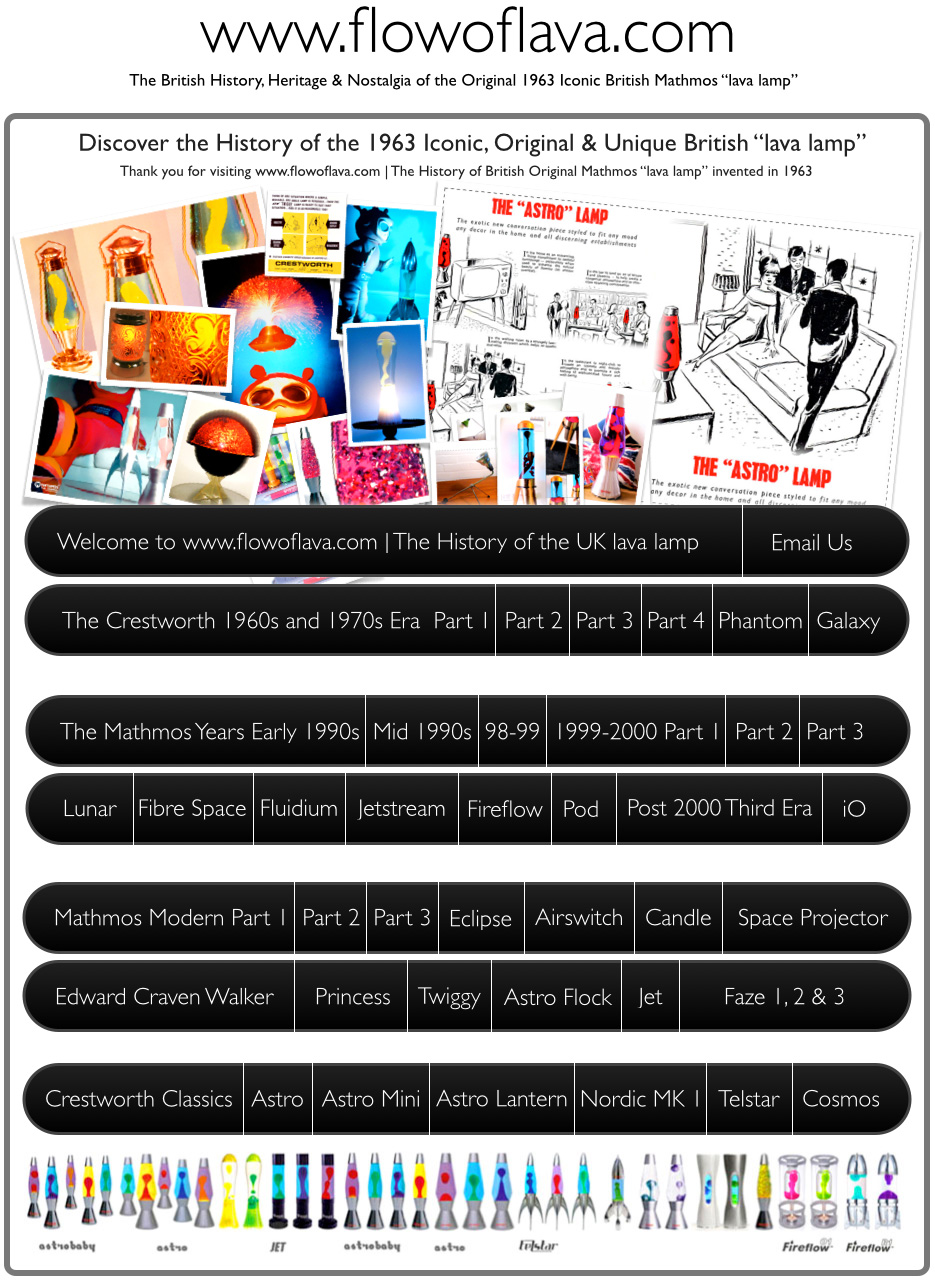
![]()
The Revival of the lava lamp | The 1990s Arrive ... As the 1990s arrived, a new era for the lava lamp would arrive. In the late 1980s, Edward Craven Walker was approached by two entrepreneurs Cressida Granger and David Mulley who expressed interest in continuing the lava lamp to its next chapter. The result was a rebranding to Mathmos and the return of the lava lamp to create a second era of success in the 1990s. The core range of the lava lamp would stay very much but with key changes. The copper finish of the past would be dropped to a more modern highly polished mirror silver finish. This was seen in the Astro model. The Astro Mini would return in a white finish known as Comet. Comet would be more popularly seen a hybrid design that featured a Astro to Astro Mini spun base and offered in beautiful metal finishes. Jet continued the success of the tubular Nordic lamps of the past but featured a Jet black finish and for a short time a two-tone base design that featured a dull metal metal silver sleeve with a black base plate. This would eventually be retired for the gloss black finish. A new design known as Rocket would be launched which offered a stunning chrome finish. Rocket has certain similarities to Crestworth's Telstar design but featured a beautiful rocket shaped cap. |
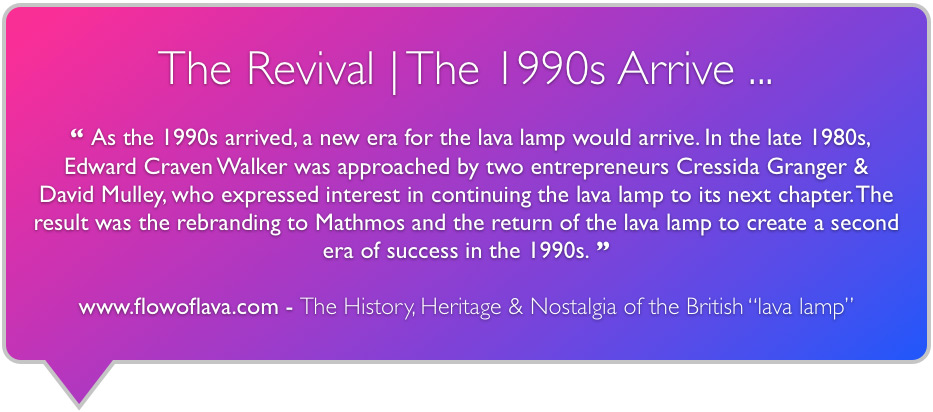
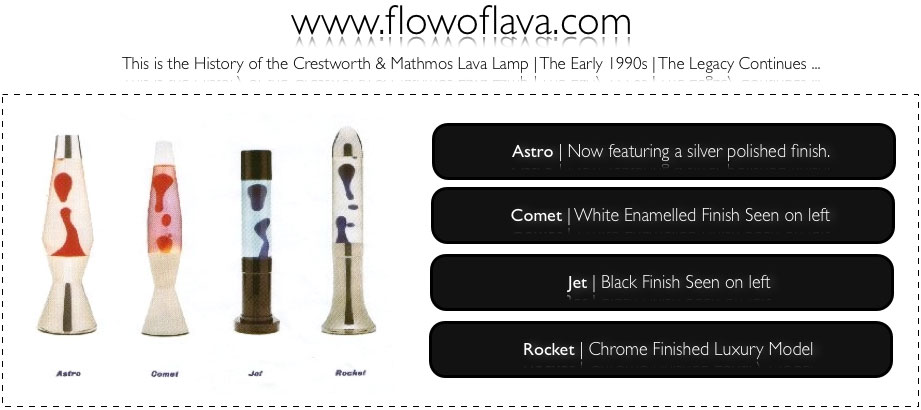
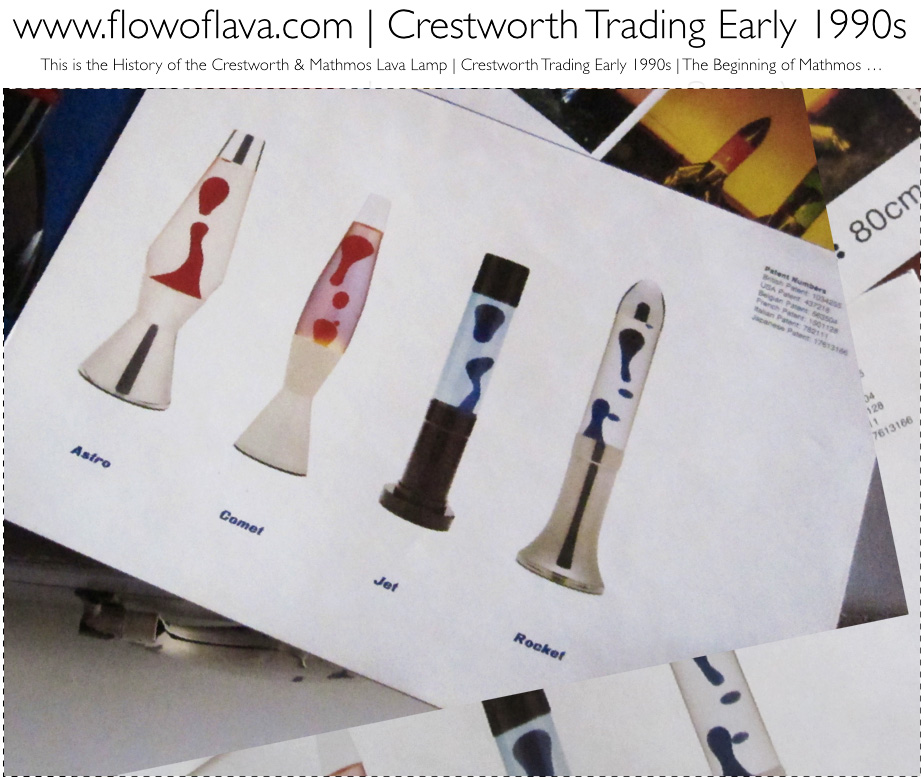
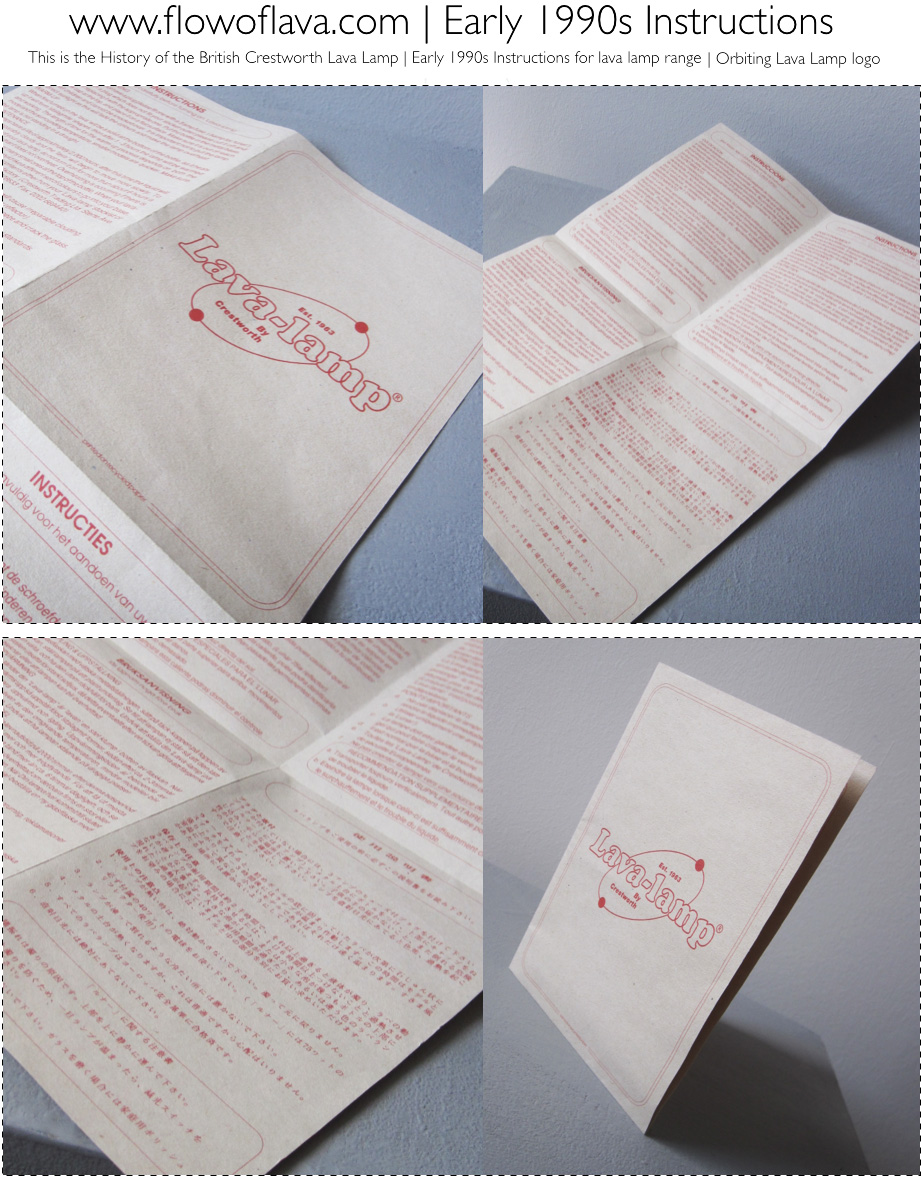
![]()
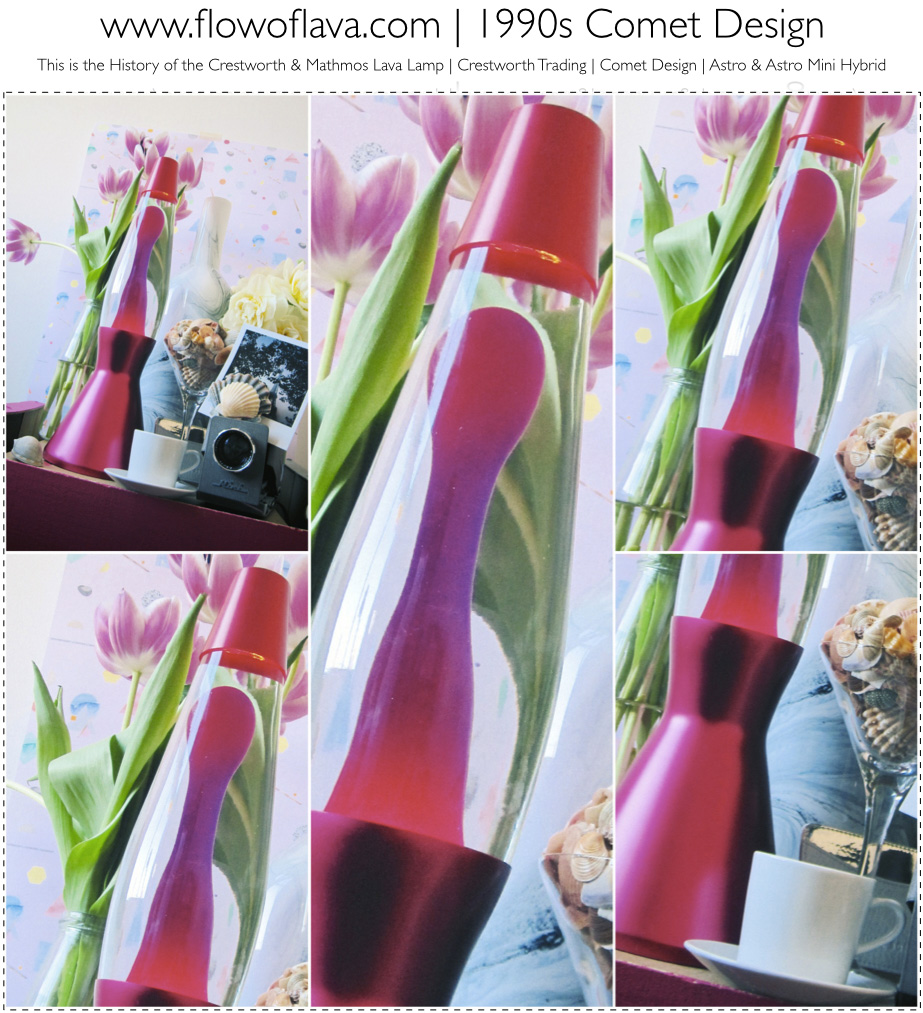
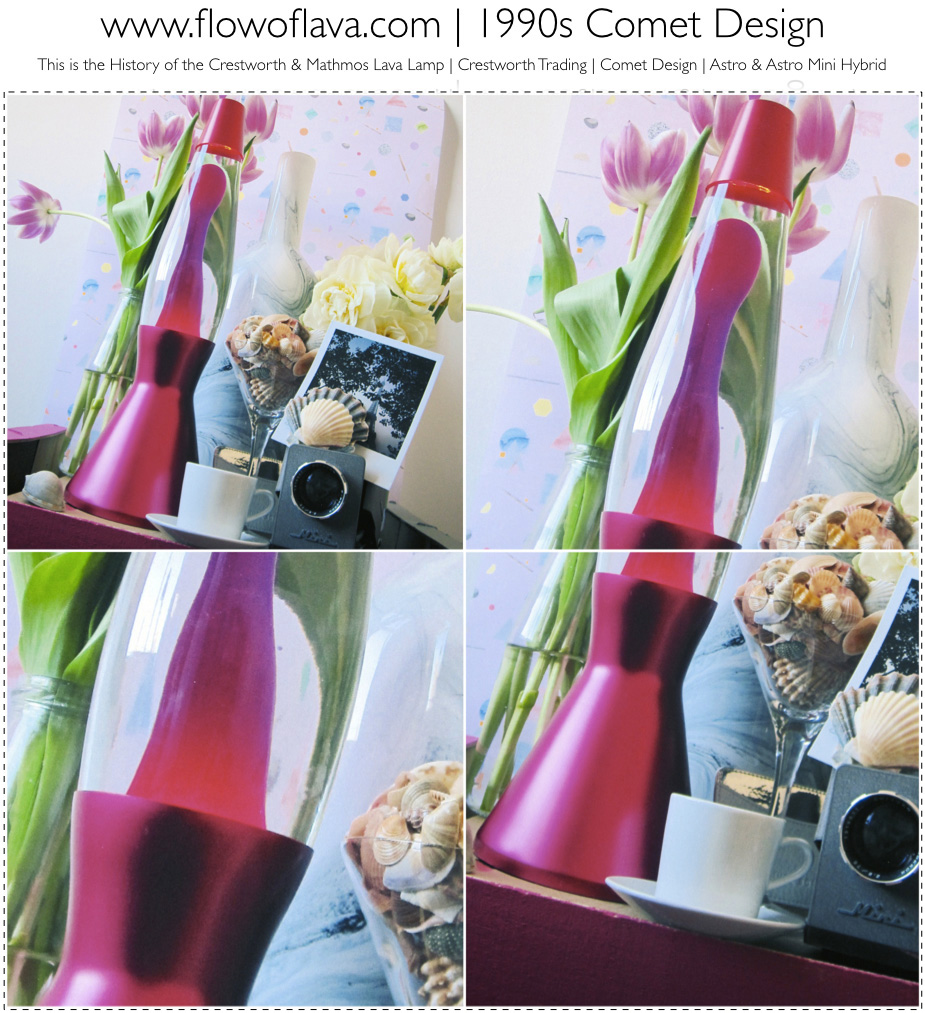
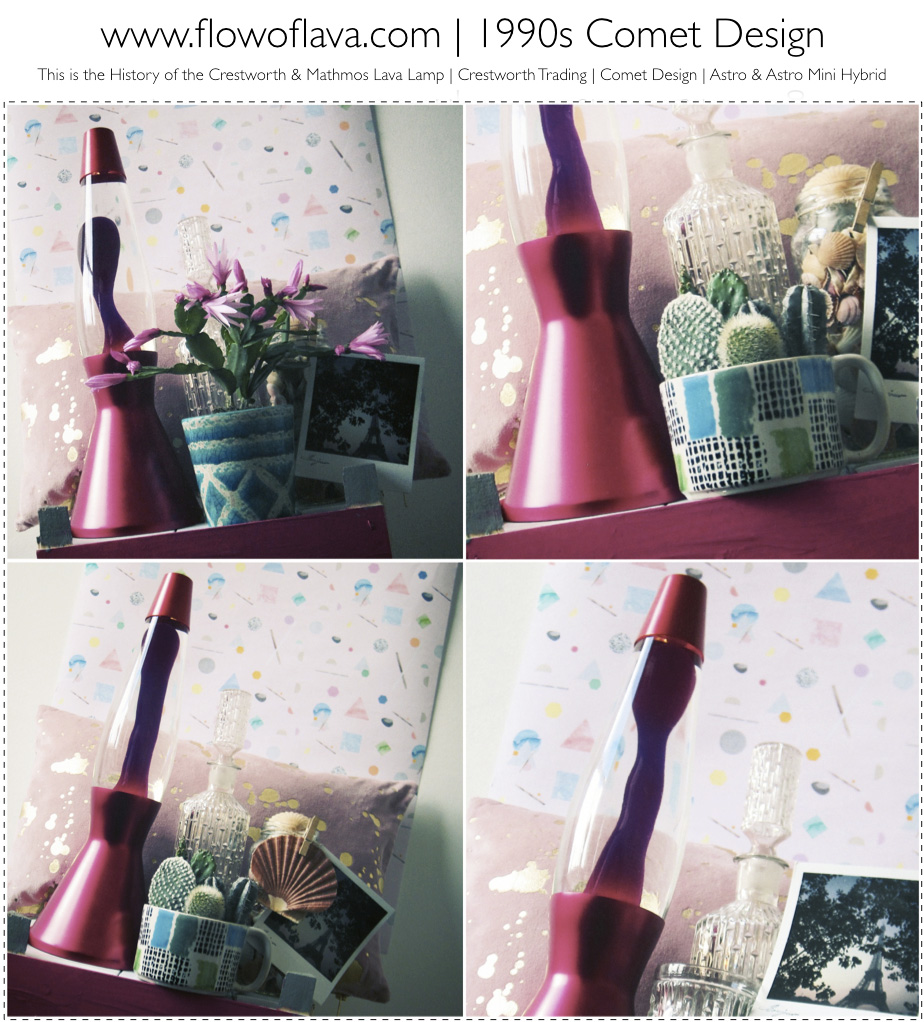
![]()
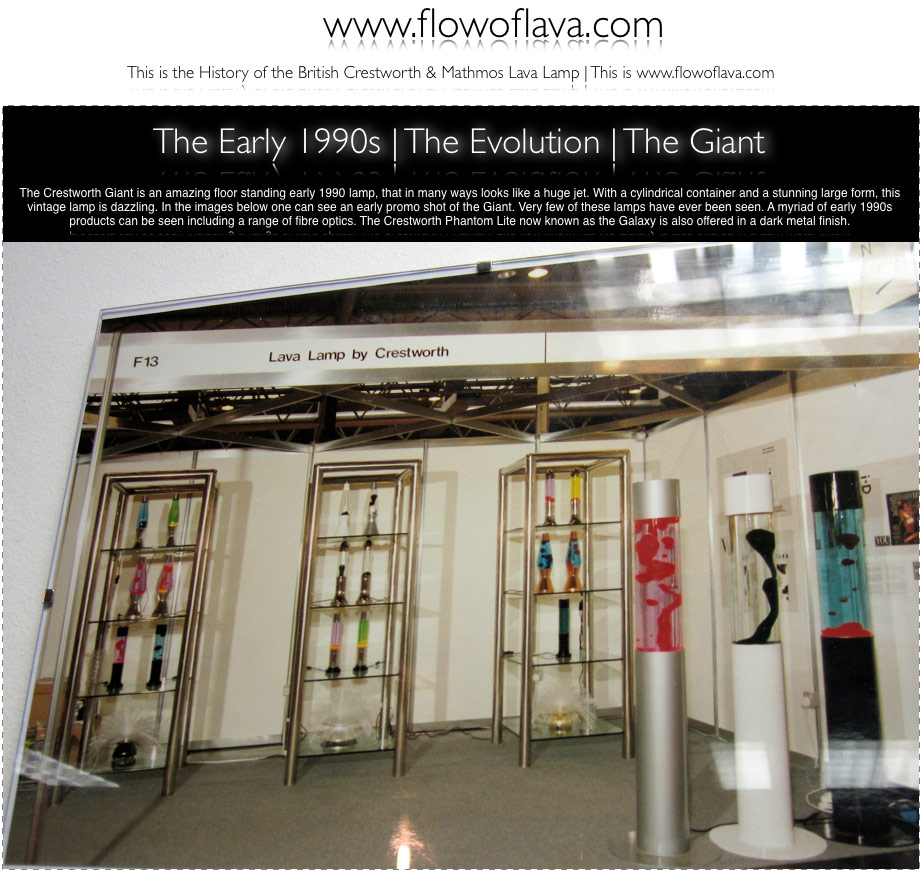
![]()
Crestworth Giant | 1990s | Galaxy (Modern Edition of the Phantom Lite) |
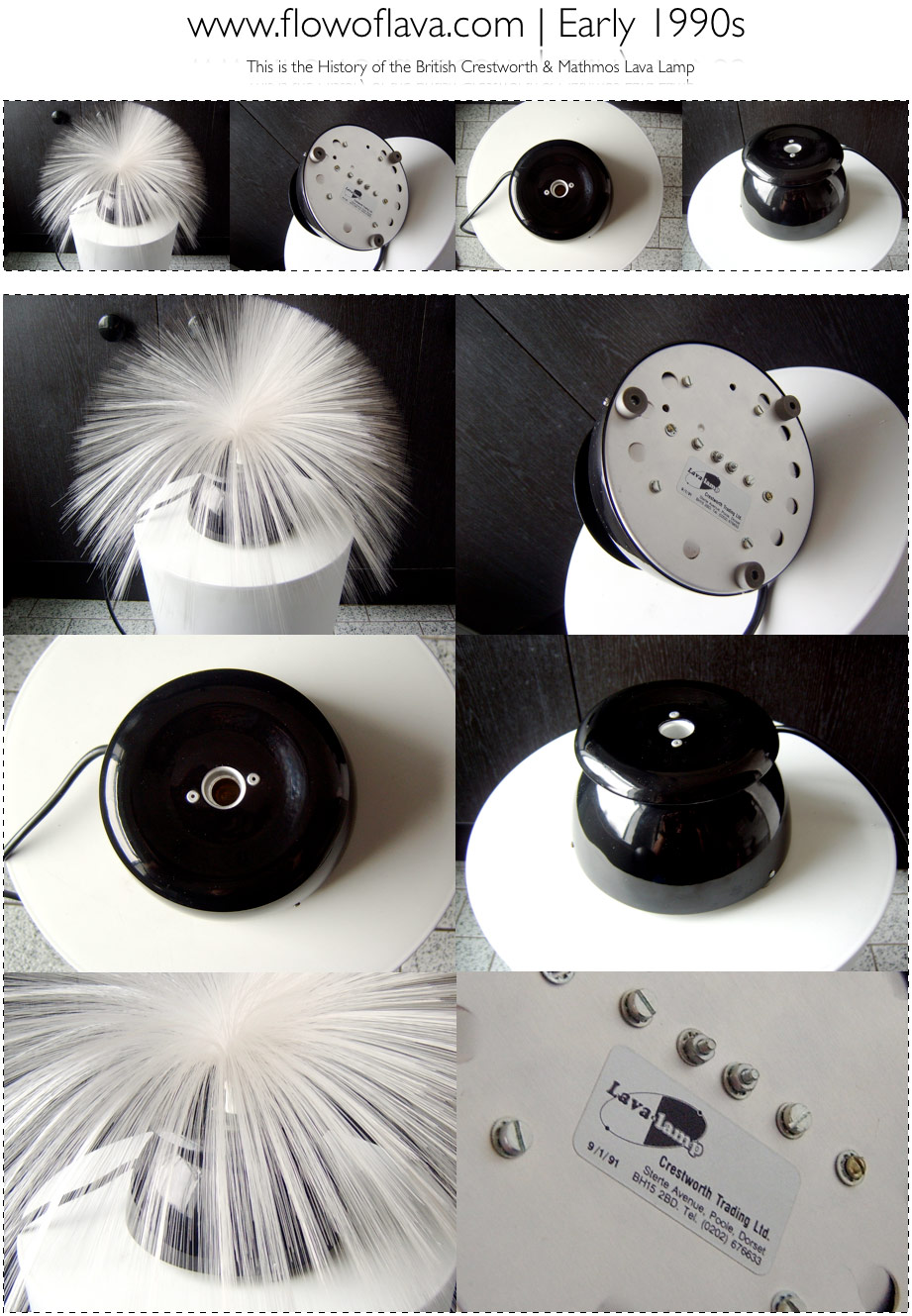
![]()
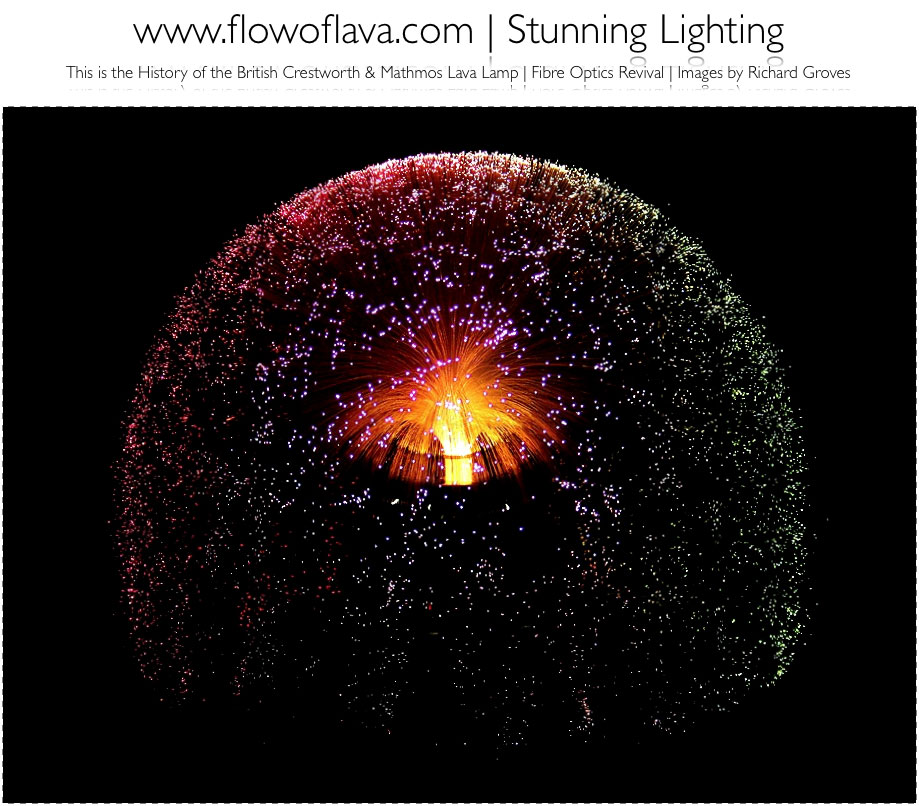
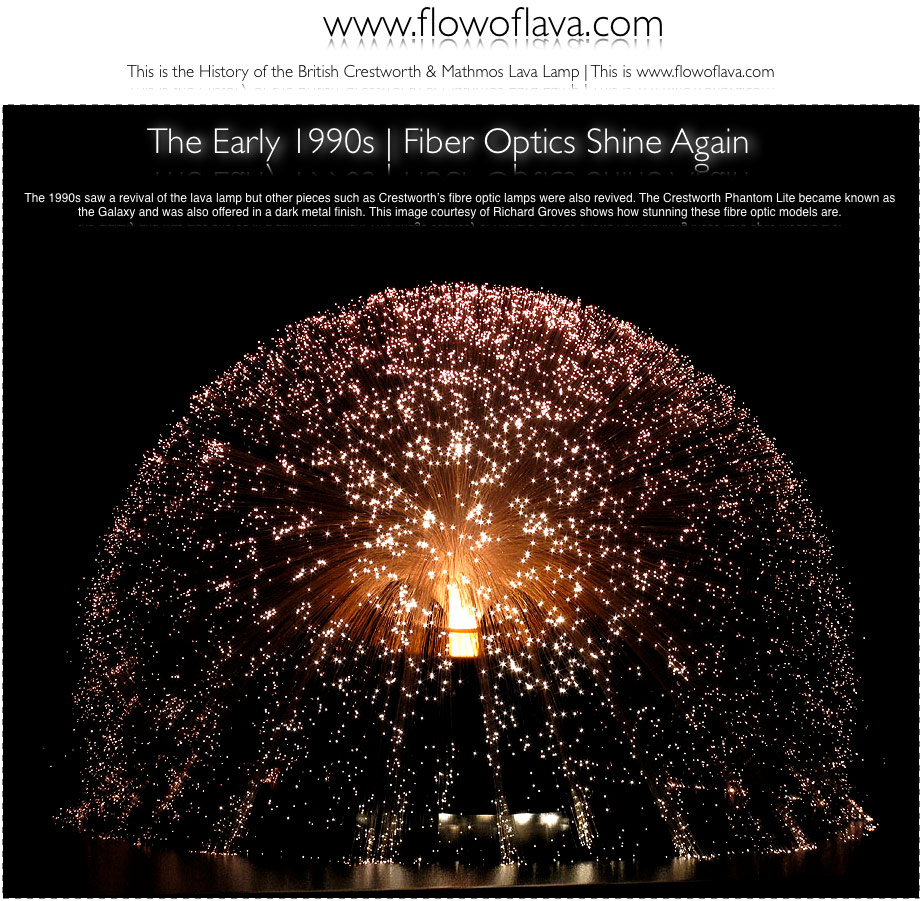
![]()
Crestworth Giant | 1990s | Designed for Display & Tradeshow Events. Images below kindly donated by Eugene. |

![]()
Crestworth Giant | 1990s | Designed for Display & Tradeshow Events | Many thanks to Eugene for the details below. Instructions for Assembly: 1. Place lamp base in final resting position as lamp is not movable once filled and assembled. Operation: Notes: If bulb fails, the lamp should be left to cool for a minimum of 3 hours. Then remove top and ensure that the aluminium lid is securely taped on to avoid spilling. The vase can then be lifted out by a strong and steady person and placed to one side whilst bulb is changed. The vase can then be very gently lowered into the base. Too much disturbance will cause the lamp irreversible clouding. |
![]()

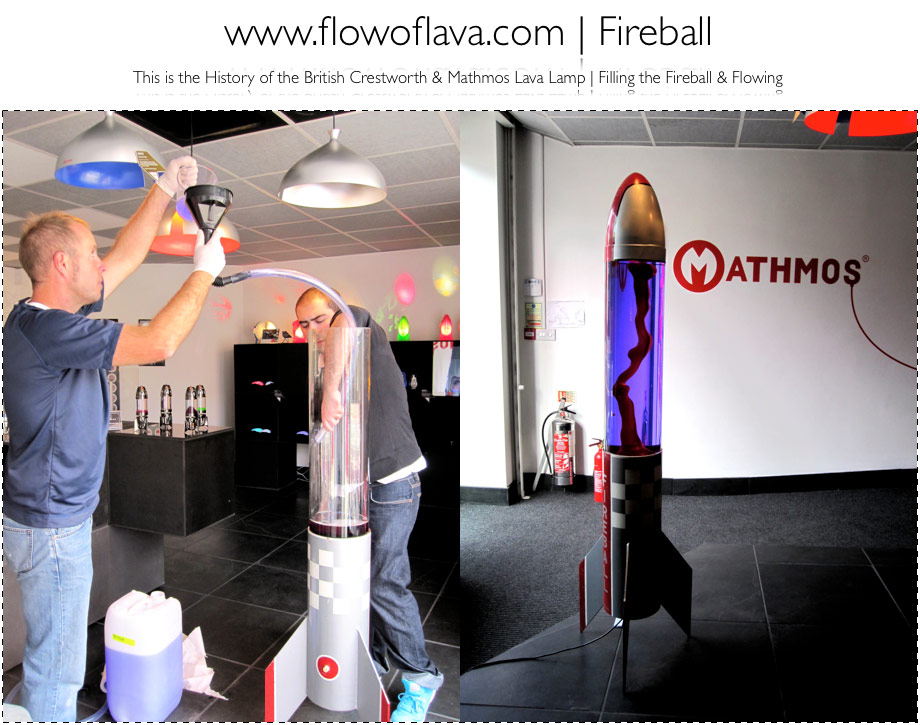
The Mathmos Fireball | Floor Standing Lava Lamps that make a statement This lamp known as the Fireball is one of the largest lava lamps ever produced during the 90s, featuring the same globe as the Crestworth Princess and the Giant Lava lamp. Very little is known about the lamp however it is significantly larger than the Mathmos Lunar and the wax is liquid when the lamp is cold. This makes the lamp very hard to transport and must be filled when it arrives at its final destination. The Fireball has the visual language of a rocket lamp essentially with a lunar style cap, a cylindrical base which is supported by three legs. Materials used in this product to this time are not known neither are the colour combinations supplied with the lamp originally. Mathmos has recently confirmed this lamp to have been made around 1992. Thank you kindly for Mathmos' help. The Fireball was seen at Mathmos' showroom where the 46th History Exhibition was held regarding the history and the legacy of the lava lamp. One can see Mathmos staff and myself filling the massive container where the specialist wax and masterfluid is very carefully poured into the lamp, slowly with a great deal of patience. This wax remains liquid when the lamp is cold so the lamp will need to be filled in its final destination. Please see the images above & below. |
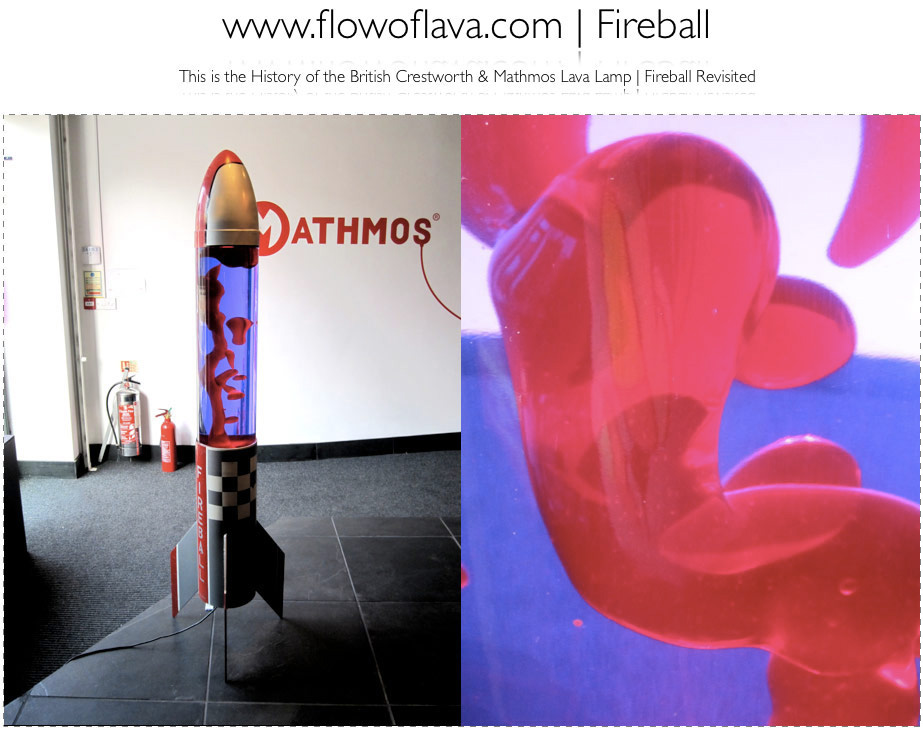
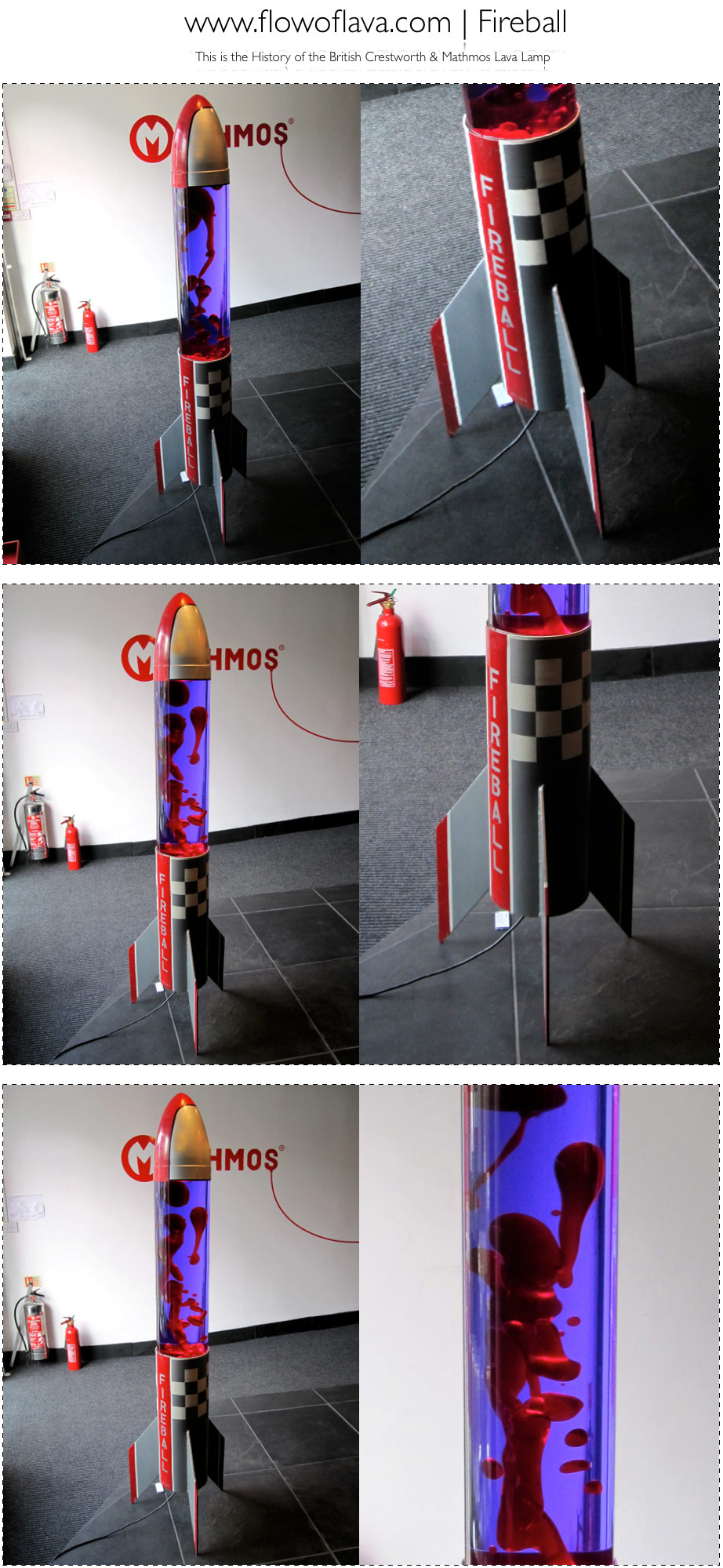
The Mathmos Fireball | Other Notes Two models were seen in the factory, one featured a red and white checkered finish with red fins (on the base) and the word fireball printed on base. The other model had blue and white chequered finish with blue fins. The lamps were on test after Ron the bottle filler/ mixer had filled the bottles. The lamps were for display purposes only. Only a handful of the lamps were made. |
![]()
Name Change to Mathmos & The Origins of the Mathmos Name In the early 1990s, Crestworth became known as Mathmos named after the bubbling force seen in cult 1960s film Barbarella. Mathmos went on to create a second era of popularity with the lamps and continued the production of many Crestworth designs such as the Astro, often modernising and refereshing the pieces for the new generation. Below one can see a selection of images from Barbarella. |
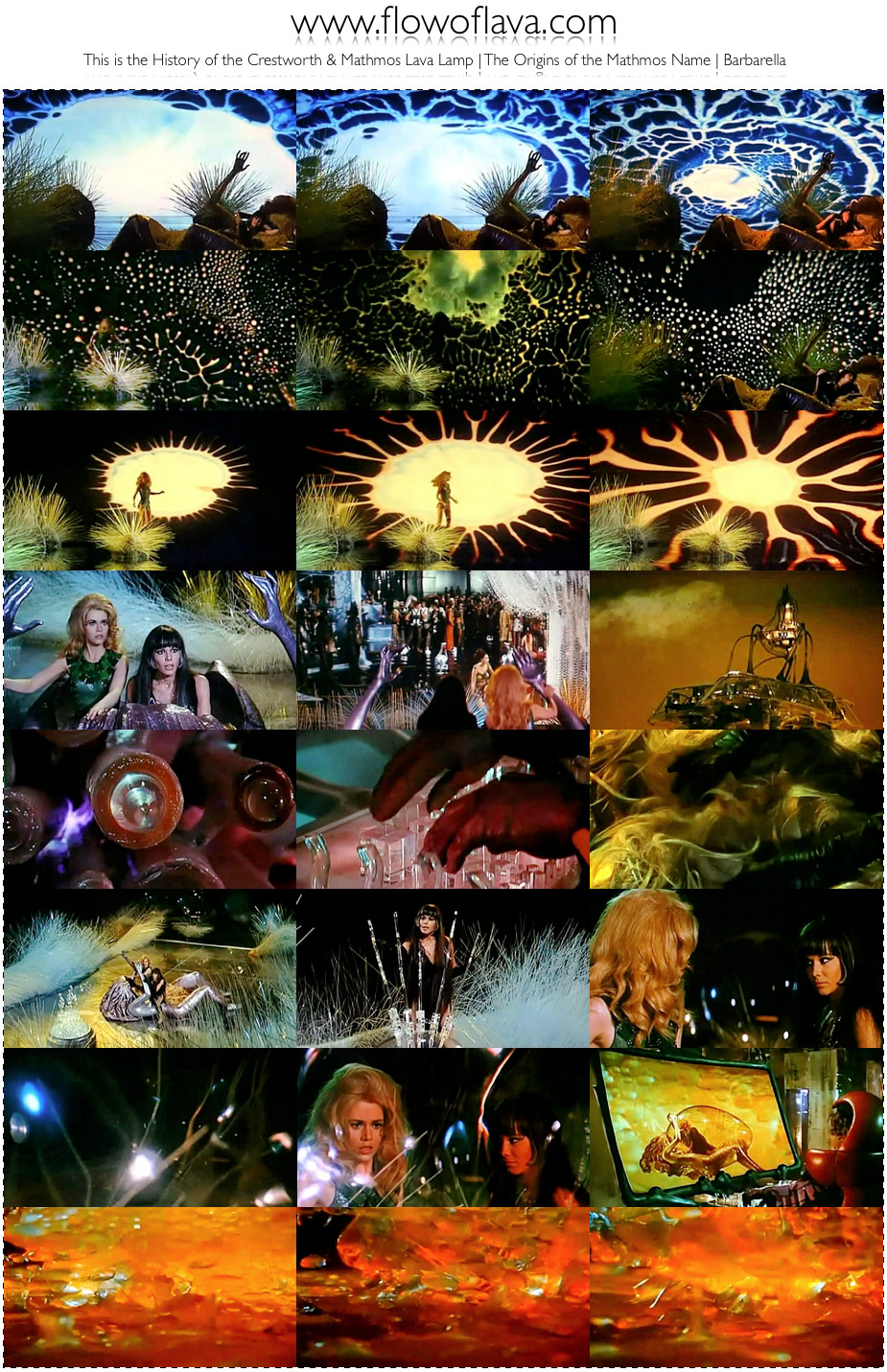
![]()
The Glitterama Story | 1990s Glitterama Glitter Lamps manufactured in Poole Dorset ... The story regaring Glitterama. Glitterama was a company that was founded by Edward Craven Walker in the 1990s which created beautiful glitter lamps with (more commonly seen multi-coloured) fine slow moving glitter. Glitterama fluid bottles don't have a great deal of motion but are rather beautiful to look at. Their lamps often feature beautifully anodised bases and caps and are very interesting pieces of history. Their factory was just next to the Original Crestworth factory in Poole. Glitterama's Jardiniere model featured the lunar style bottle. There was also a small model too. Assorted variations of the Glitteramas, in beautiful anodised enclosures and in different sizes existed and were produced in two sizes, the smaller ones are powered by 30w reflector bulbs and the larger types are powered by 75w bulbs. Larger models used the Mathmos Lunar bottles and so many collectors use Mathmos Lunar bottles for a lava lamp option. Images below of a Glitterama model LJ3 are kind courtesy of: Stuart Robinson. Click here to see our extended gallery dedicated to Glitterama glitter lamps. |
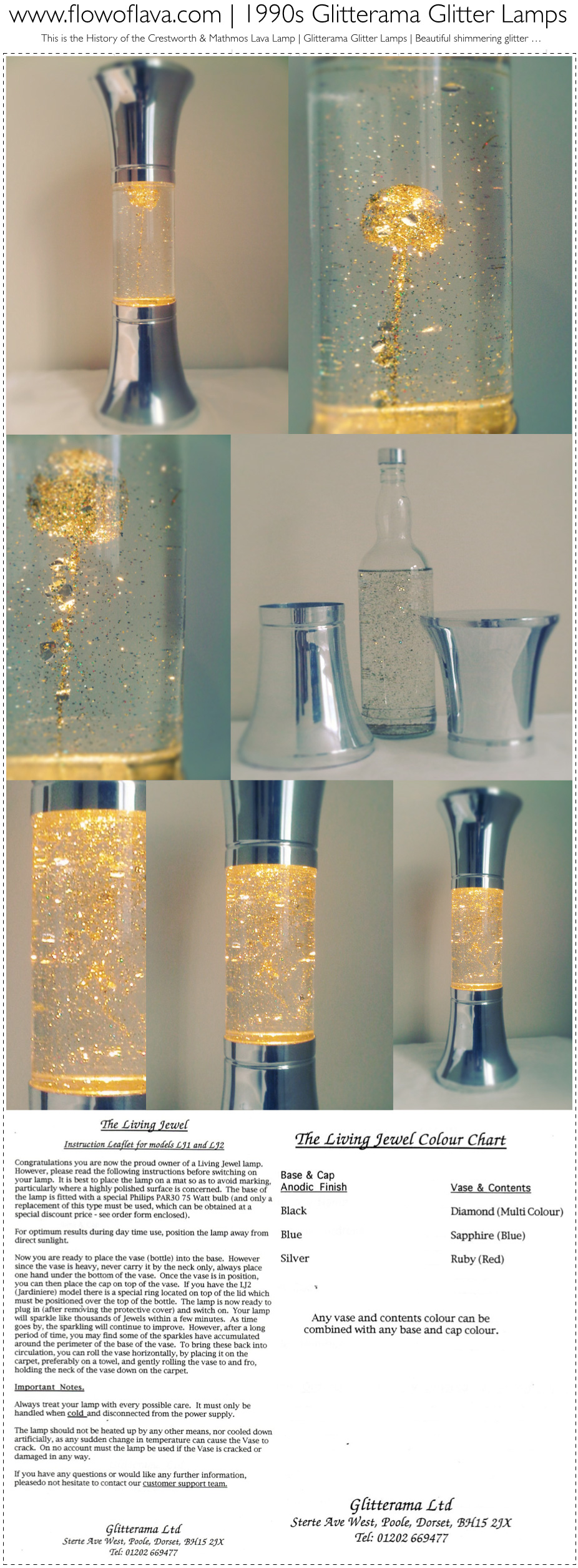
![]()
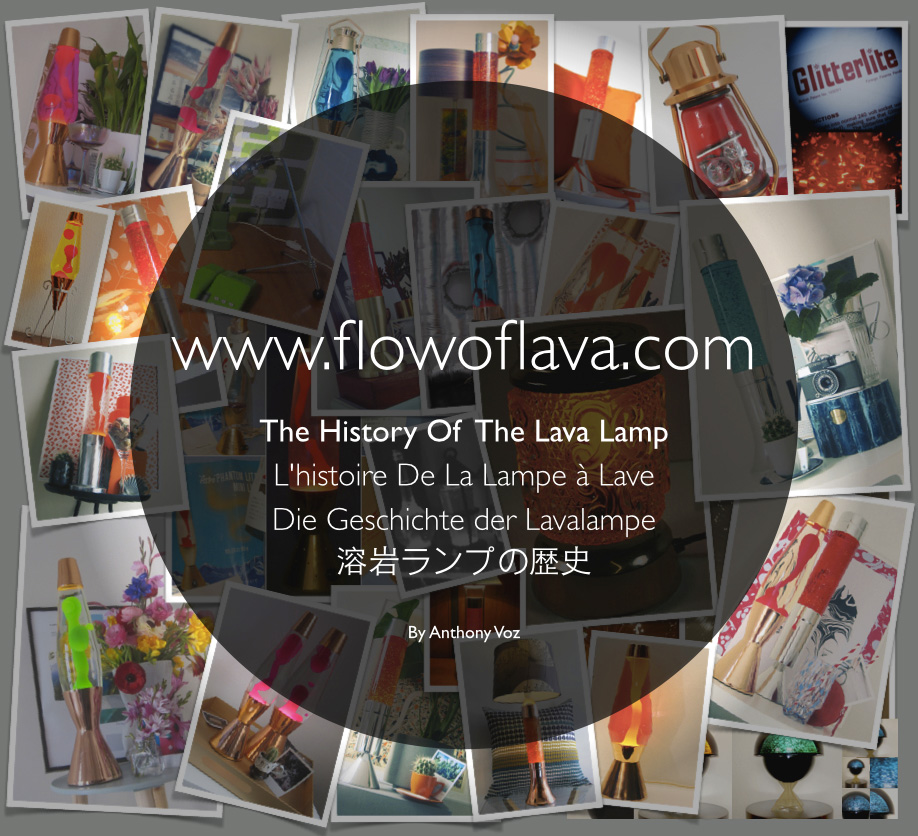
![]()
You are browsing www.flowoflava.com, a site dedicated to the history, heritage and nostalgia of the Original Mathmos Astro Lava Lamp. Created by Anthony Voz. Thank you for visiting www.lightoflava.com | www.flowoflava.com